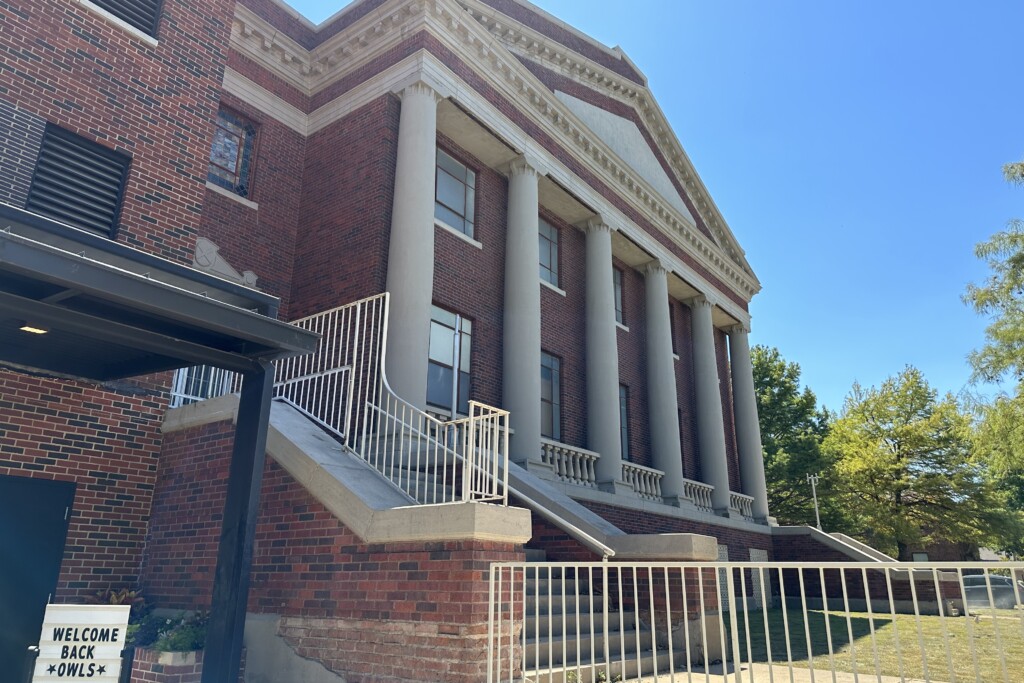
Many are looking into repurposing churches or other faith-based properties and turning them into mutifamily or single-family developments, offices, restaurants, and schools, as these unique, and sometimes historic buildings, can be key components of a community that residents hate to see demolished. That being said, any potential church repurposing project should be approached with great caution, because the property may have significant deferred maintenance and not be code compliant. It’s important to do your research and realize that repurposing an old church often comes with extra time, surprises, and additional costs.
Our firm represented The Kessler School located in North Oak Cliff on their quest to find a new location. The school’s board chair, Cooper Koch, led the search effort. The school had outgrown the space it occupied for many years at Kessler Park United Methodist Church. That property is also an old church with many issues. The school’s leadership knew that finding a new location for a school in North Oak Cliff would prove challenging.
After several years of looking at many properties, we discovered the nearly 100-year-old Calvary Baptist Church of Oak Cliff located at 1822 W. 10th Street with its neoclassical architecture. The property is not historically designated, which provided the school with a lot of flexibility during renovations.
I asked Koch to share advice for others contemplating repurposing a church. Below are some of his key lessons learned:
ANTICIPATE DELAYS
The school’s doors opened two years later than planned. While it initially faced delays in securing our specific use permit and building permits, it soon encountered pandemic-related supply chain issues, labor shortages, and a financing partner who took ample time with approvals. The lesson? Always factor in extra time for unforeseen challenges.
BUILD CUSHION INTO YOUR BUDGET
As with many renovation projects, costs exceeded The Kessler School’s initial budget; however, the school also discovered opportunities. With walls already open, the team chose to replace some aging infrastructure, preventing more invasive and costly repairs down the line. Be mindful that “Oh, it’s just $10,000 more to do X addition” adds up quickly!
EXPECT THE (ALWAYS BAD) UNEXPECTED
Surprises are inevitable, and in The Kessler School’s case, they were almost always unpleasant. A collapsed sewer line meant an unexpected—and unbudgeted—trenching of the cement floor throughout most of the first floor, requiring asbestos abatement and renovation of an area the team didn’t plan to touch. On the topic of asbestos, we’ve learned firsthand of its immense popularity during the mid-1900s. Hidden pockets of the material were discovered every time we opened a wall or removed a fixture. Additionally, we had to widen every doorway to meet ADA requirements. The cost of recutting and reframing a doorway doesn’t sound like a big deal until you magnify it by more than 50.
HIRE A PROJECT MANAGER
I had been advised to hire a project manager, and I ignored it. The added expense sounded too significant. Plus, our head of school and I had overseen numerous home renovation projects, so we thought, “How much harder could this be?” In hindsight, I think a project manager’s expertise could have saved us from potential time delays and costly mistakes—not to mention saved our nerves. Even if the costs had netted out equally, the peace of mind alone would have been priceless. If I’m ever in a similar situation again, I will not skimp on this crucial role.
BE FLEXIBLE WITH PLANS AND SEEK PROBLEM SOLVERS
A project of this magnitude is a living entity. As we progressed, we had to adjust our plans to accommodate new discoveries and challenges. Flexibility and adaptability—and prayer—became our mantras. And while architects and contractors bring invaluable expertise, sometimes the most effective solutions come from unexpected sources. We were fortunate to have a member on our construction committee who excelled at on-the-fly problem-solving. Their insights often provided simpler and more effective solutions than those initially proposed.
The journey to repurpose the old Calvary Baptist Church was filled with challenges, but each obstacle presented an opportunity to learn and grow. Today, as I walk through the halls of our new campus, I’m reminded of the resilience, adaptability, and collaborative spirit that brought this dream to life.
But preserving a piece of Oak Cliff’s history was our true reward. Calvary Baptist Church stood as a testament to the faith and spirit of generations. By breathing new life into this building, we’ve not only saved it from near-certain demolition in rapidly gentrifying North Oak Cliff, but we also ensured its legacy continues with our families. The walls that once echoed hymns now resonate with the laughter and curiosity of young minds. This project was more than a renovation; it was a heartfelt tribute to the past and a hopeful nod to the future.
Eliza Solender is the president of Solender/Hall, Inc. and serves on the board of directors of Origin Bancorp and the Meadows Museum Advisory Council. For the past 13 years, she has taught the Real Estate 101 for Nonprofits class for The Real Estate Council.
Cooper Koch is president of Multistory Media and serves as president of the board of The Kessler School.
This article was originally posted in DMagazine Commercial Real Estate – Nonprofits | CRE Opinion
